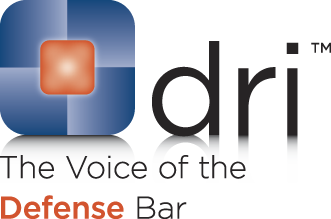In the 2011 case of Powell v. Liberty Mutual Fire Ins. Co., 127 Nev. Adv. Op 14, 252 P.3d 668 (2011) the Nevada Supreme Court struck down the insurance company’s “earth movement” exclusion as ambiguous and unenforceable.
In light of an earlier federal case, the outcome was something of a surprise. In the earlier case of Schroeder v. State Farm Fire and Cas. Co., 770 F.Supp. 558 (1991) the court considered facts very similar to those raised in the Powell decision. The opinion recites those stipulated facts agreed to by the parties:
Plaintiffs own a Hallmark shop in Ely, Nevada. Sometime before May 26, 1990, a city water service pipe, running underground to plaintiffs’ shop, ruptured due to old age, rust and corrosion. As a result, water escaped from the pipe, saturating the soil beneath plaintiffs’ building. The water caused the cementing agent in the soil to dissolve and collapse under load. The soil settled downward, causing the building to shift, resulting in damage to plaintiffs’ building. At no time did water enter plaintiffs’ building and cause damage.
In Schroeder, the court ultimately approved the carrier’s use of the earth movement exclusion.
The most recent case of Powell went the other way. Again, the case did a great job reciting the facts:
Powell owns a house in Northwest Reno and has a homeowner’s insurance policy through Liberty Mutual. The policy has an earth movement exclusion, which states in pertinent part: “We do not insure for loss caused directly or indirectly by any of the following.” Such loss is excluded regardless of any other cause or event contributing concurrently or in any sequence to the loss. [1] . . . Earth movement, meaning earthquake including land shock waves or tremors before, during or after a volcanic eruption; landslide, mine subsidence; mudflow; earth sinking, rising or shifting.
The policy also has a settling clause, which further excludes losses caused by “[s]ettling, shrinking, bulging or expansion, including resultant cracking, of pavements, patios, foundations, walls, floors, roofs or ceilings.”
In July 2005, a water pipe in Powell’s house exploded, flooding the dirt sub-basement. Powell made a claim to Liberty Mutual because her house had suffered a shift in the foundation and had suffered extensive cracking and separation in the wall and ceiling in the area of the entryway, kitchen, and two bedrooms. She attributed this damage to the burst water pipe.
An expert chosen by Powell and hired by Liberty Mutual inspected the house and concluded that “after many years of relative foundation stability, [the house] is currently being affected by the expansion of supporting clay soils. This expansion, while likely present in lesser degrees in the past, has been severely aggravated by the intrusion of a significant amount of water a short time ago . . . .” Liberty Mutual denied Powell’s claim, citing the earth movement exclusion in her policy. Powell asked Liberty Mutual to reconsider the claim, and it denied that request.
In the end, the Powell decision did not officially overrule the Schroeder decision. Instead, the court found that the Powell earth movement exclusion was ambiguous, because it was not clear as to whether the provision applied only to naturally occurring water or man-made water sources or both. Because the court found the exclusion to be ambiguous, it interpreted the exclusion against Liberty Mutual and refused to enforce it. The court also found that the “settling” clause did not clarify or rectify the ambiguity.
The Supreme Court returned the case to trial at the district court allowing the Plaintiff to argue not only that the company had breached the contract, but that there was a claim for unfair claims practices as well.
If going forward, an insurance company plans to exclude coverage to structures for “earth movement”, the policy will have to be either identical to the Schroeder policy or otherwise very clear and unambiguous. If you have questions about exclusions for damage to structures caused by earth movement, please contact Mills & Associates for an opinion.
 Follow
Follow Email
Email


